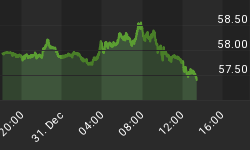Reported construction spending for March (yes we are still looking at first quarter data), was -0.2%. However, the Census Department revised February construction spending from 0.8% to 1.8%.
These construction reports are so volatile and so frequently revised they are nearly worthless except for entertainment purposes. Nonetheless, let's have a closer look, including a detailed look weather-related effects.
Construction Spending Volatility
Bloomberg Econoday comments on construction volatility.
Data on construction spending are subject to unusual volatility, evident in today's report which came in far below expectations, at minus 0.2 percent vs Econoday's consensus for a 0.5 percent gain. These results for March, however, are offset by a 1.0 percentage point upward revision to February which now stands at a very strong 1.8 percent.
March's weakness is tied to a sharp 1.3 percent decline in the private nonresidential component, where spending was especially weak for commercial units as well as office units. Public spending was also weak with educational building down for a 2nd straight month. The positives in the report are in housing with multi-family units extending their strong run with a 2.0 percent monthly gain, supported by a gain for single-family units and another strong month for home improvements.
It's hard to get a gauge on this report because of its revisions and volatility, and the general weakness in nonresidential construction contrasts with the enormous strength of investment in nonresidential structures in Friday's first-quarter GDP report. The housing side is more clear with gains backed up by strength in underlying permits and strong demand for new housing. Next up on the construction sector will be Friday's employment report and construction payrolls which have been mostly solid so far this year.
March Revisions vs February

Revision Synopsis
- December: Unrevised at 1,188,941 Hooray!
- January: Revised from 1,183,840 to 1,198,779
- February: Revised from 1,192,822 to 1,220,735
The January revision from -0.4 to +1.3 was even larger than the positive revision in February.
If we just compare February as reported in February to February as reported in March, the percentage increase is 2.3%, not reported 1.8% as the revisions build on each other.
Weather Effect?
This was a strong report and even stronger than it looks at the first glance. However, I caution everyone to not read too much into this strength.
December was unusually cold. January was unusually warm as was February. Seasonal adjustments do not factor in weather.

Second Warmest February in 123 Years!
Please consider Assessing the U.S. Climate in February 2017.
During February, the average contiguous U.S. temperature was 41.2°F, 7.3°F above the 20th century average. This ranked as the second warmest February in the 123-year period of record. Nearly one-quarter of the U.S. was record warm in February. Only February 1954 was warmer for the nation at 41.4°F. Between December 2016 and February 2017, the average temperature across the contiguous U.S. was 35.9°F, 3.7°F above average, the sixth warmest winter on record.
Precipitation

Precipitation may have hampered construction in parts of the West coast, but the precipitation map appears to be overall favorable as well.
So, before anyone gets too giddy over these numbers, bear in mind very unusual seasonality factors.
Builders build when the weather permits, and the weather was very cooperative this Winter.
Despite Weather, Consumer Spending is Weak
Those expecting a strong second quarter based on housing alone may be in for a rude awakening as consumers have a newfound hold on their pocketbooks.
Here are three articles to consider.
- Consumer Spending Flat, PCE Inflation Weakest Showing In 16 Years, Rate Hike Odds Rising.
- Regional Lender Loan Crash: Nearly Every Major Regional Bank Missed Lending Estimate.
- Subprime Credit Card Losses Bite Capital One: Income Down 20%, Charge-Offs Up 30%.
Link number one is from earlier today.
The second quarter is not off to a good start. However, the GDP models may go haywire once again by not factoring in weather-related phenomenon.
















